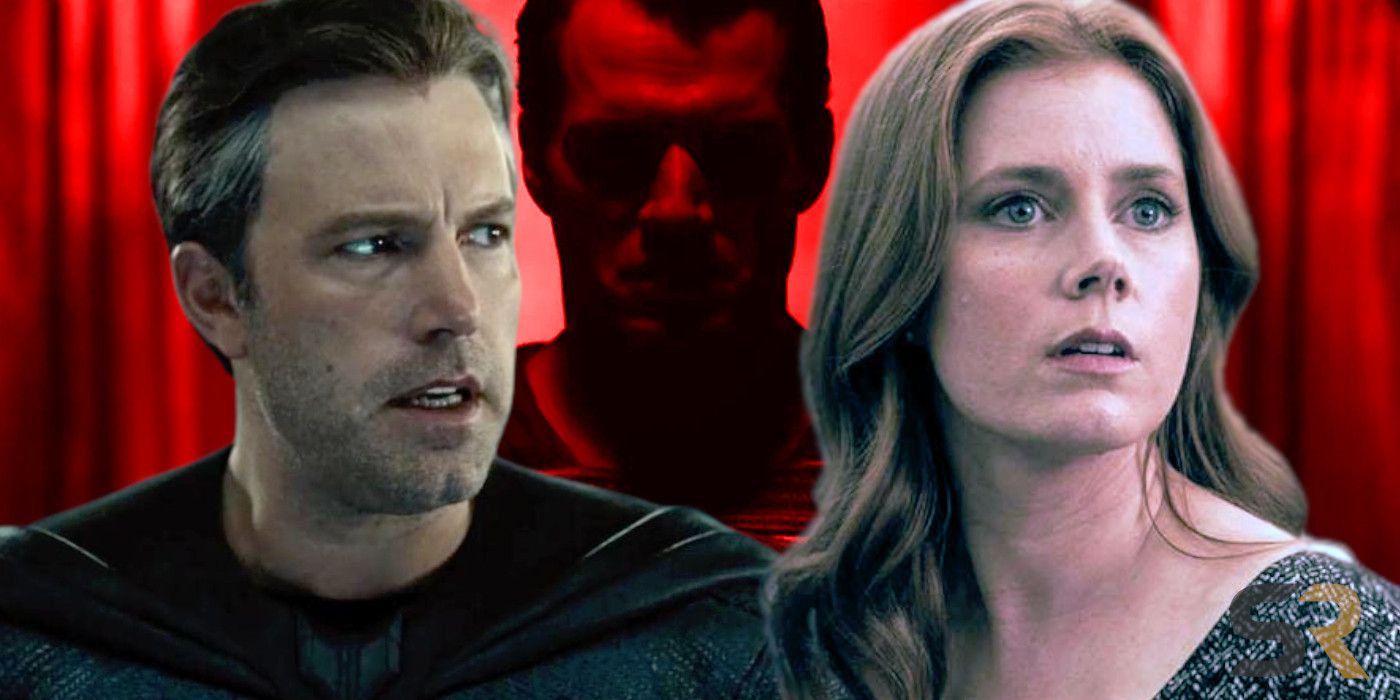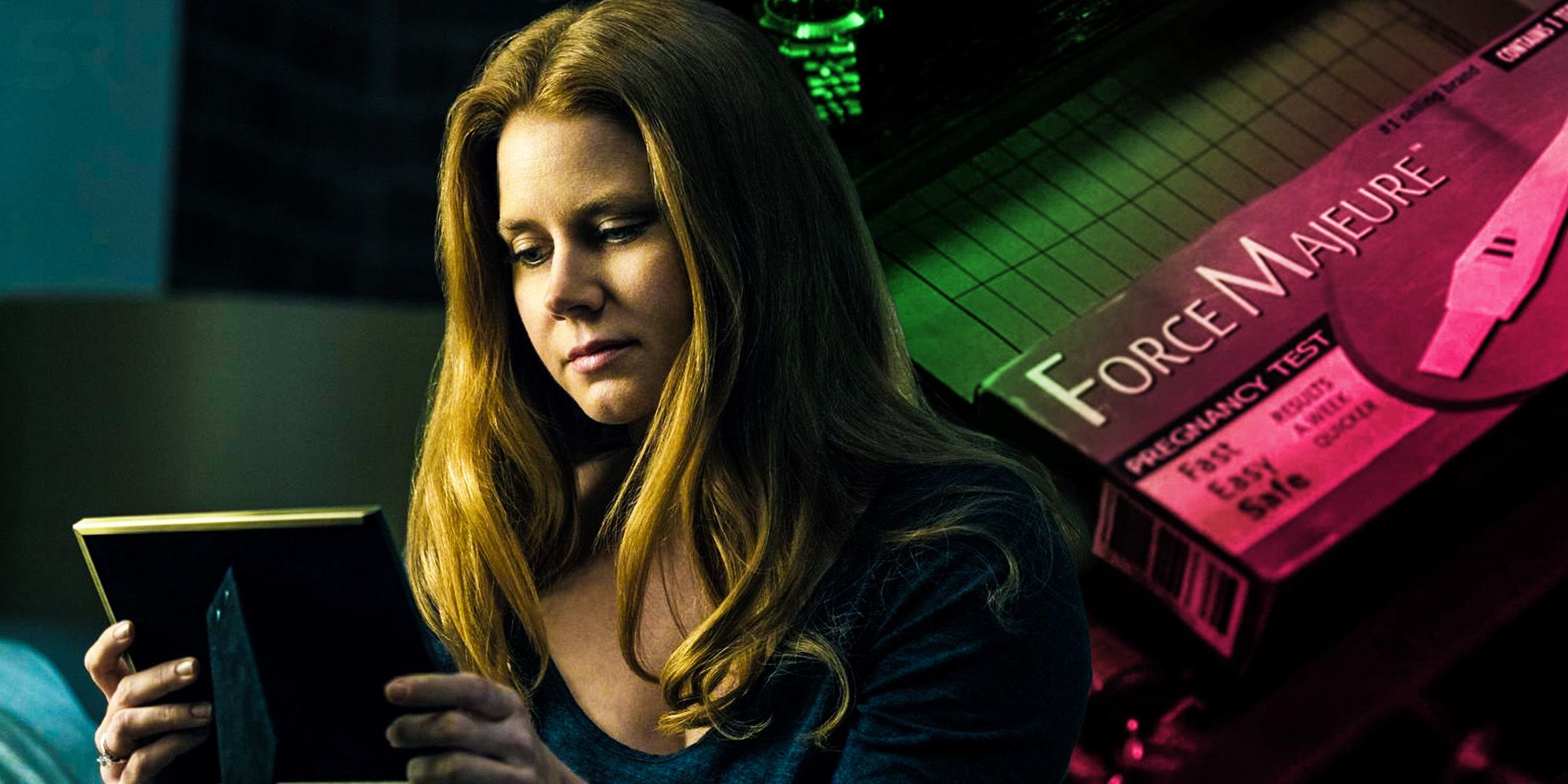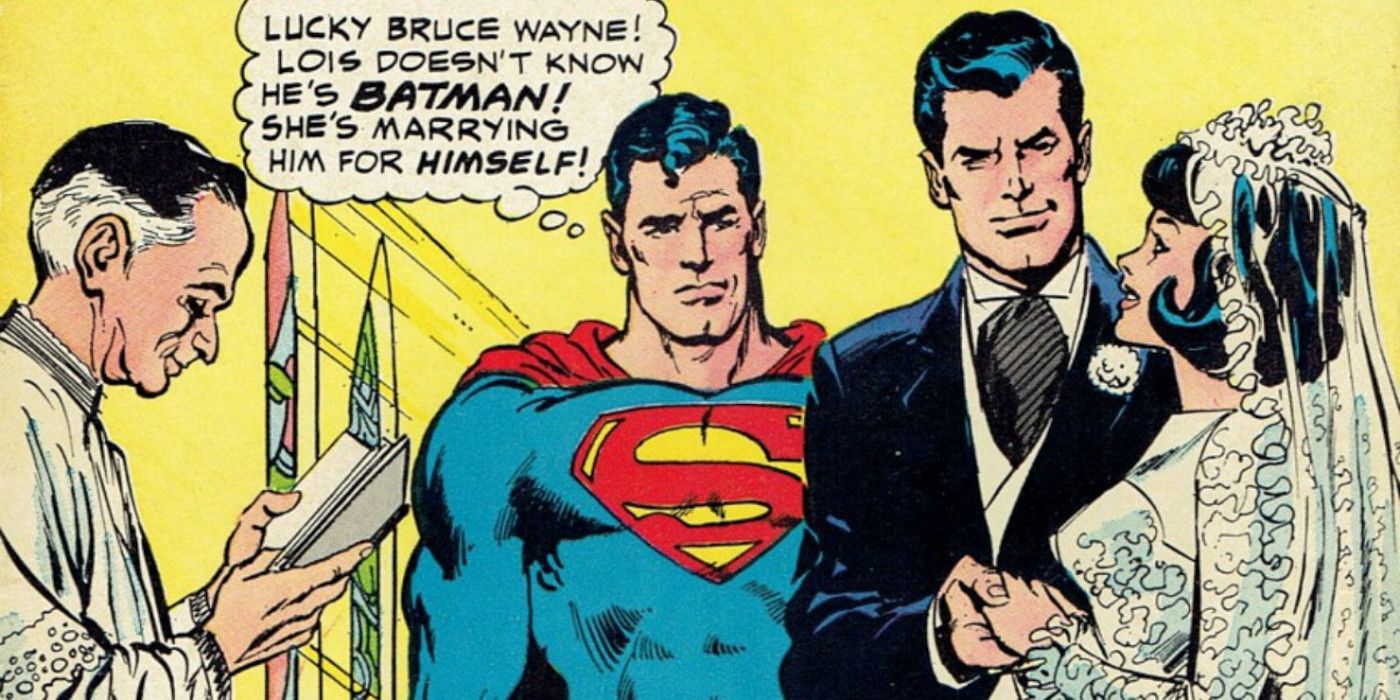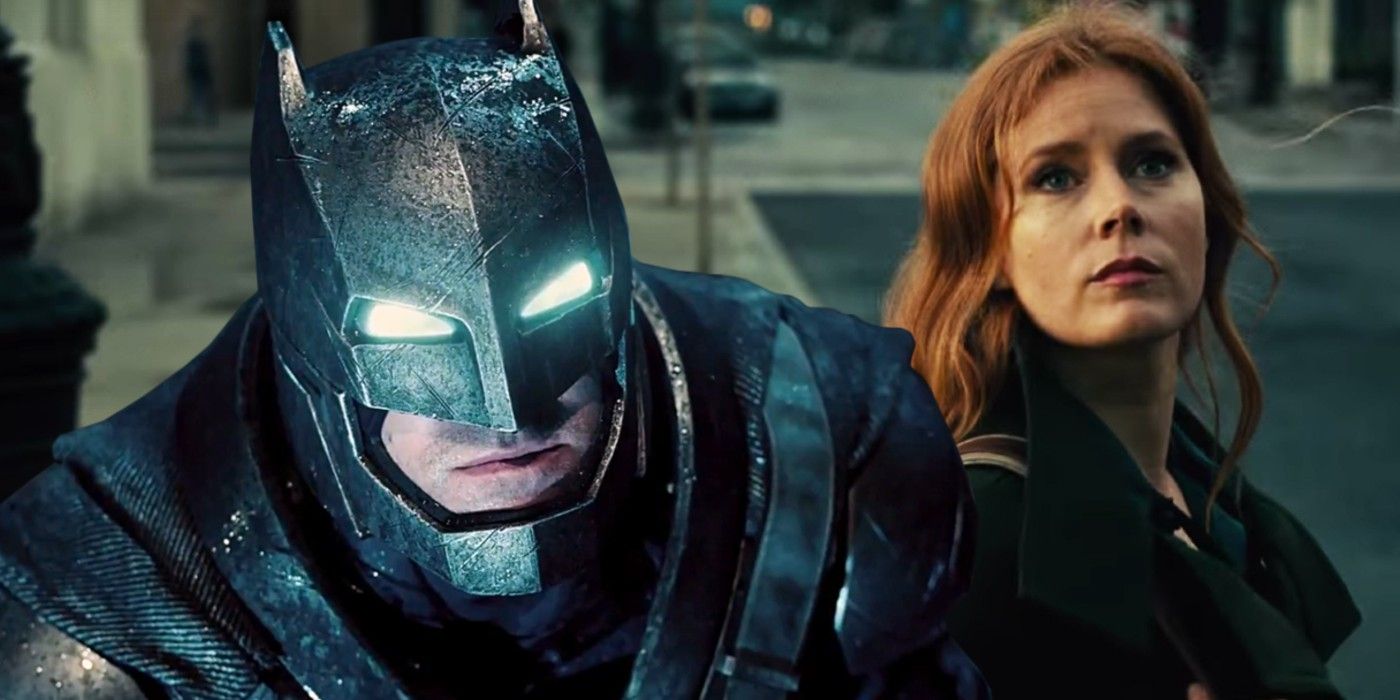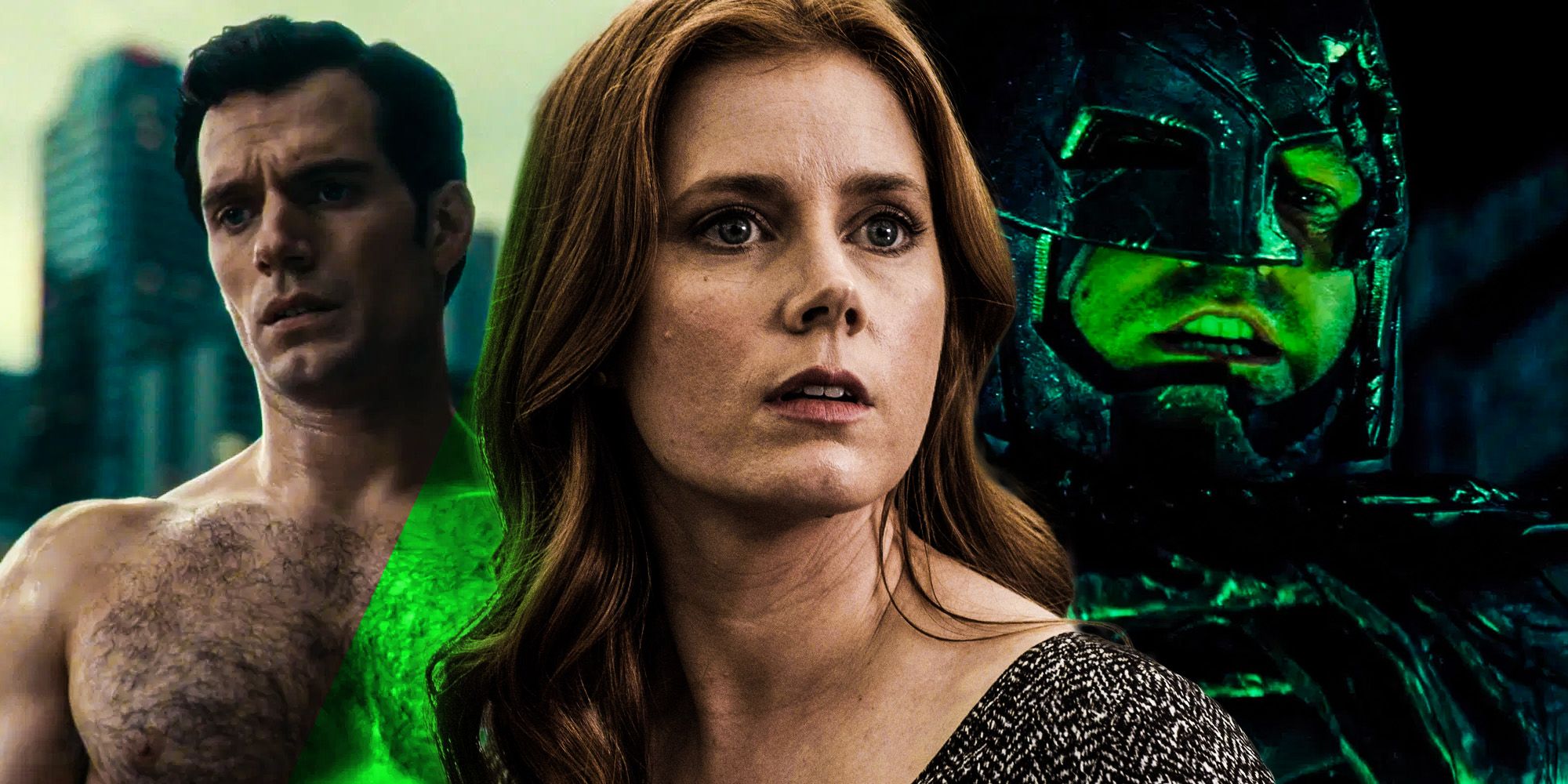Zack Snyder's Justice League restored most of Zack Snyder's original vision for his DCEU story and characters, except for the original controversial Lois Lane plot, which would have been one of the most important parts of the Snyderverse story. Even though Justice League was originally taken out of Snyder's hands and reformed into a nearly unrecognizable movie in his absence by Joss Whedon, when the Snyder Cut was given the go-ahead it became clear just how expansive the original DCEU plan was.
The theatrical cut of Justice League removed numerous characters and subplots from backstories to larger sequel seeds and universe building, like the inclusion of DC big bad Darkseid, but the one element Snyder said was removed entirely from an early rewrite after the harsh reactions to Batman v Superman: Dawn of Justice was the romantic subplot between Bruce Wayne and Lois Lane resulting in her carrying his child. Since this element was out of the script before Snyder even started principal photography, it wasn't returned to the story when the restoration of Zack Snyder's Justice League happened throughout 2020 in preparation for its HBO Max release.
When Snyder originally teased the plot point in 2019, he said "the actual idea, the hard, hard idea, the scary idea, we never filmed because the studio was like, 'That's crazy.' And we were so insecure at the time after [Batman v Superman] came out, we were just like, 'I guess it is crazy. We're f—in' nuts. There's gonna be mass hysteria in the streets if we film this.'" While the full idea is certainly controversial and still spawns social media arguments to this day, taking a broader look at Snyder's story plans for his 5-part Superman centric Justice Leauge story, it becomes clear why Lois Lane's original character arc was the key to the whole Snyderverse, and would have made it even better.
Zack Snyder's Abandoned Lois Lane Justice League Plan Explained
In Zack Snyder's original Justice League trilogy plan, after Superman's death at the end of Batman v Superman: Dawn of Justice, Bruce Wayne would have become a source of support for Lois Lane, as one of the few people she could truly confide in about the full reality of her loss, and that relationship would have resulted in her being pregnant with Bruce's child before Superman's return in Justice League. After Superman's resurrection, he wouldn't be exactly the same. He would have leaned into his Kryptonian heritage and role as a hero, wearing the black Superman suit, and mostly abandoning the Clark Kent persona since Kent was listed as dead after the events of Batman v Superman. Even so, the love he shared with Lois was still there and she would have returned to him, lying to Batman, telling him her unborn child isn't his.
In Justice League 2, Lex Luthor would have assembled the Injustice League, discovered the location of the anti-life equation, and united the three Mother Boxes again to summon Darkseid to Earth, telling him he can kill Superman, but the Lord of Apokolips says he doesn't want Superman dead, he wants him to submit, leading Lex to tell him "the girl, she is the key to breaking Superman's spirit." Superman was to arrive on the scene to initiate a battle with Darkseid, but Darkseid boom tubed away from the battle to arrive at the Batcave where Lois was working with Batman to track down Luthor, killing her with his Omega Beams (as glimpsed in Cyborg's Knightmare vision in Zack Snyder's Justice League). Superman wouldn't get there in time, blaming Bruce for her death (as teased in Batman v Superman's Knightmare scene). Batman escapes, but Superman would have been overcome with grief, making his mind susceptible to the Anti-Life Equation, giving Darkseid an opening to infect his mind with the hopelessness of Anti-Life, the opposite of free will, to put him under his control leading to the apocalyptic Knightmare future.
As a future time-traveling Flash tried to warn Bruce in Batman v Superman, "it's Lois Lane, she is the key," although when his warning arrived in BvS, he realized the time travel was miscalculated and he'd arrived "too soon," meaning Batman lacked the context he needed for the message to make any sense. As a result, Flash's warning didn't stop the Knightmare from happening again, but since Bruce knew the warning was that Lois is "the key" and Flash's arrival had been "too soon," he's empowered with the knowledge he needs to do things differently. When this version of Bruce reaches the moment where he sends Flash through time, he tells him to instead tell past-Bruce Wayne that Lois lied and he is the father. This time, Bruce ensures Flash arrives at the right point in time, right before Darkseid boom tubes into the Batcave. Flash delivers this revised message to Bruce, leading him to take swifter action, leaping in front of the Omega beams to save Lois. This sacrifice play gives Superman the time he needs to zoom to the Batcave in time to properly rescue Lois, finally averting the Knightmare and leading to a full-on battle between the pantheon of DC heroes and the New Gods of Apokolips to close out Snyder's DCEU story.
In the version of Zack Snyder's Justice League we ended up getting, much of the set-up plays out the same, only there is no hint of a Bruce Wayne and Lois Lane romance (other than vague teases in Batman v Superman), and the hints at Lois Lane's pregnancy all suggest Superman as the father. It's not entirely clear how this impacts the rest of the story, which could hypothetically play out largely the same on a high level, but it's not clear what Flash's revised message to Bruce would be in Justice League 3 if the romance was abandoned. Also, in the original version, Bruce and Lois' child, raised as Bruce Kent, was to eventually become the new Batman, and if that plot point remained the same, it would now mean the Wayne family line dies with Bruce Wayne when Batman died to save Lois and the biological son of Superman becomes the new Batman instead.
Bruce Wayne Dating Lois Lane After Superman's Death Isn't Actually That Crazy
The first thing to address here is the controversy of whether or not it's even appropriate for Bruce Wayne and Lois Lane to become romantically involved after Superman's death, which is the aspect that tends to raise the hackles of most detractors, but it should be pointed out this is hardly a new story trope, and not just in soap operas. Most specifically, John Boorman's Excalibur was a major influence for Snyder's DC movies, with Superman and Batman often standing in for Arthur and Lancelot. In Excalibur, Lancelot and Guinevere have an affair that leads to the fall of Arthur, who's manipulated by Morgana, bringing a curse on the land and death of many of the Knights of the Round Table. It's not until Lancelot's squire, Parcival, finds Arthur the Holy Grail that Arthur reconciles with Guinevere and reclaims his land, with Lancelot arriving to save the day, but dying in the final battle. The Snyderverse parallels are clear, as Excalibur tells the story of two of the most shining heroes of myth failing in their weakest moments only to rise again and find redemption, proving why their story is one of legend.
Although it isn't even necessary to look to legend or myth, as it's also hardly the first time Bruce and Lois have become romantically involved in the larger DC canon. Most famously in animation, The Batman Superman Movie: World's Finest, comprised of a three-part arc of Superman: The Animated Series, Bruce tries to date Lois, but there was also a brief flirtation in the comics during the New 52 era, and an even older comic from 1969, Superman's Girl Friend Lois Lane #89, featured a story (which now canonically occurred on Earth-89) where Bruce Wayne and Lois Lane get married, complete with their child, Bruce Wayne Jr., becoming Batman's successor (sound familiar?). Obviously, Clark Kent and Lois Lane go together like, well, Clark Kent and Lois Lane, and that's exactly what Zack Snyder's Justice League movies would have affirmed, with Bruce and Lois' romantic encounter only briefly existing while they thought Superman was dead for good.
Outside of fiction, the phenomenon of a widow repartnering with a friend or close relative of her deceased husband is far from uncommon. In fact, some of the most high-profile instances are after a traumatic event such as widows marrying the brother or squad-mate of a husband lost at war, or numerous widows of firefighters who lost their lives in New York on 9/11 dating or even marrying one of their husband's colleagues. Grief, loss, forming a family, and developing romantic relationships are all complicated issues on their own, but even more so when intertwined. Those concepts are all themes at the core of Batman and Superman's stories (and the stories of many other heroes) in the Snyderverse. In fact, any outrage or discomfort fans express at the notion is perfectly expected as some friends and family of similar relationships in real life take very similar issues with those remarriages, often causing conflict when a couple from an existing social group form a romantic bond after the death of a loved one. It may seem messy and dramatic, but it's a more than realistic human scenario with a history rooted in classic myth and DC Comics (and animation) canon.
Why Batman's Romance With Lois Was the Most Important Key to Snyder's Whole Justice League Arc
Unquestionably, the most controversial element of Batman v Superman: Dawn of Justice was the "Martha moment," and while the reaction that particular scene is likely the main driver of the initial Justice League rewrites, it's also the scene that would have gained the most thematic significance if the original Lois Lane and Bruce Wayne pregnancy plot had been retained. Flash's warning that Lois is the key clearly had significance as a warning of the dark consequences of Lois' eventual death, it also highlights a majorly overlooked aspect of Batman v Superman's climactic Martha revelation.
Related: Justice League: The Snyder Cut’s Biggest Differences From 2017
All of Snyder's DCEU movies leaned heavily on themes of parenthood, lost family, found family, and adoption, and while Batman and Superman's moms both having the name Martha is relevant to the resolution of their BvS conflict, that's only one component of the eponymous "Martha moment," despite detractors over-simplifying it as Batman and Superman "becoming best friends because their moms have the same name." Superman saying Martha's name initially triggers the Dark Knight's memory of the Wayne murders, but it's not enough for him to take his boot of the throat of the Last Son of Krypton or lower the kryptonite spear. If anything, the name actually triggers Batman's PTSD-fueled rage even more. It's not until Lois steps between Batman and Superman to say "it's his mother's name" that the Caped Crusader actually steps back, realizing he's pointing a murder weapon at two lovers as Joe Chill once pointed a gun at his parents. This is a key distinction because it's a moment that would have served as a motif in all five of Zack Snyder's DCEU movies.
Man of Steel opens with two parents, Jor-El and Lara, facing down General Zod and sacrificing themselves for their child. Batman v Superman: Dawn of Justice opens with two parents, Thomas and Martha Wayne, dying for "no reason at all," as Batman would describe it, causing him to harness his trauma to take the mantle of Batman in a role he thought would carry him to the light, a dream he describes as "a beautiful lie." Batman stands in the shoes of both General Zod and Joe Chill in Batman v Superman's Martha moment, but in Zack Snyder's Justice League, the tables are turned. After Superman's resurrection, when he's about to kill Batman, Lois steps between them, now putting Superman in the role of the motif's killer facing down two lovers (plus the baby in Lois' womb), shaking Superman from his blood lust enough to save Batman.
This same scenario would be revisited a fifth time in Justice League 2 when Darkseid boom tubes into the Batcave and kills Lois in front of Bruce, and then a final time in Justice League 3. This final time is key because it's the most personal for Bruce as it puts him in the shoes of his father as a killer threatens Lois and his unborn son. This situation turns Lois into the metaphorical Martha, giving Bruce the opportunity to do what Thomas Wayne couldn't, finally giving his parents' death meaning after spending his whole life because "the world only makes sense if you force it to." While Thomas Wayne also stepped in front of Joe Chill's gun to save Martha, she still died, but this time Superman is on the way, and Batman's sacrifice gives him the precious moments he needed to save both the mother and the child. Together, Superman and Batman save Martha.
How Bruce Wayne and Lois Lane's Baby Would Have Made Zack Snyder's DCEU Story Better
This story doesn't just serve as the perfect thematic conclusion to Zack Snyder's Batman and Superman stories, but also takes all the controversial deconstruction of the heroes from Snyder's previous movies and puts all the pieces of Batman and Superman back together, tying a bow around their core concepts and unifying their long-held dichotomies as two sides of the same coin, giving meaning to their origins, their deaths, and unifying their shared legacy as the broken house of Wayne and the broken House of El together to produce Bruce Wayne Jr., the White Knight Batman his father originally dreamed of - a hero that can only exist because of the shared values and legacy of Batman and Superman.
Superman is an orphan sent to Earth to be raised by humans to learn how to be a hero, and now Bruce Wayne gives up his life to save his son, who's adopted and raised by a Kryptonian. Batman lost his way and became a killer, believing his ideals were a "beautiful lie," only for the story to put him in the same position as the Final Crisis comics where he famously used a gun to kill Darkseid, only for Zack Snyder - who's always been vilified for giving Batman a gun - to have him instead use his body as a shield to save Lois from Darkseid instead. Superman lost his reason for being Clark Kent, only to rediscover it when he needs to be a father to Bruce's child, while Batman abandoned Bruce Wayne, believing he could only keep the world safe by killing Superman, saying "I'm older now than my father ever was, this may be the only thing I do that matters" in Batman v Superman, only for him to find himself in Thomas Wayne's shoes, where defending the innocent, not seeking vengeance, is his true legacy. In the end, the straightest path to the core of both Superman and Batman was, as Lex Luthor phrased it, "a pretty little road called Lois Lane."
Surely Snyder's DC story will be told in full in one form or another one day, whether lightning strikes twice and the impossible happens again and the Snyderverse story is completed in live-action, it gets completed as a comic or adapted to animation, or the full story is realized by some other means; however, what's not clear is if this story will see Snyder will stick to Lois Lane's child being a product of her relationship with Superman or if there's a way to revert to his original plan where she conceives a child with Bruce Wayne. Whatever the route, hopefully, the story will reach the same level of thematic resonance as the original DCEU arc where intrepid Daily Planet reporter Lois Lane is the key to Batman, Superman, and everything.
Next: The Snyder Cut Proves WB Killed Their Best Chance to Compete With Marvel

